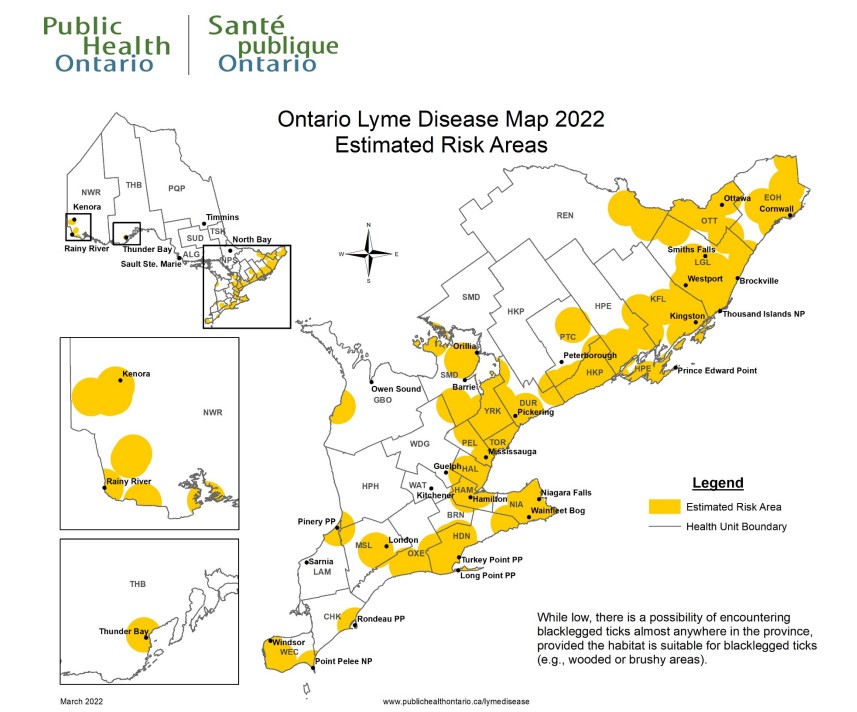
As the weather warms up, Public Health officials are warning to keep an eye out for ticks.
Rondeau Provincial Park, Pinery Provincial Park, and Point Peele National Park have all been identified as high-risk areas for Lyme disease due to the increased blacklegged tick population and the number of ticks positive for the bacteria that causes Lyme disease.
If bitten by an identified blacklegged tick from this high-risk area, and it has been attached and feeding for more than 24 hours, it is recommended that you consult a health care provider.
Even if you have not or do not plan to go to areas of elevated risk for Lyme disease, it is important to still take precautions. While the probability is low, it is possible to find an infected tick almost anywhere in Ontario.
Always do a tick check when you come in from outdoor activities, regardless of where you are.
Protect yourself against tick bites. Besides routine tick checks after outdoor activities, you can protect yourself against tick bites by:
- Covering up with long, light coloured tops and pants as well as closed-toe shoes
- Use insect repellent with DEET or icaridin
- Stick to marked trails and avoid densely wooded areas or areas with high grassEarly symptoms of Lyme disease appear 3 to 30 days after a bite by an infected blacklegged tick. Most people experience flu-like symptoms, including:
- A rash at the site of the tick bite (sometimes shaped like a bullseye)
- Fever
- Chills
- Headache
- Muscle and joint pain
- Swollen lymph nodes
If Lyme disease is not treated, additional symptoms can appear months or even years later. These include:
- Additional skin rashes
- Severe headaches
- Facial paralysis
- Heart palpitations or irregular heartbeat
- Dizziness or shortness of breath
- Confusion, memory loss and inflammation of the brain or spinal cord
- Shooting pains, numbness or tingling in hands and feet
- Arthritis and severe joint pain and swelling
